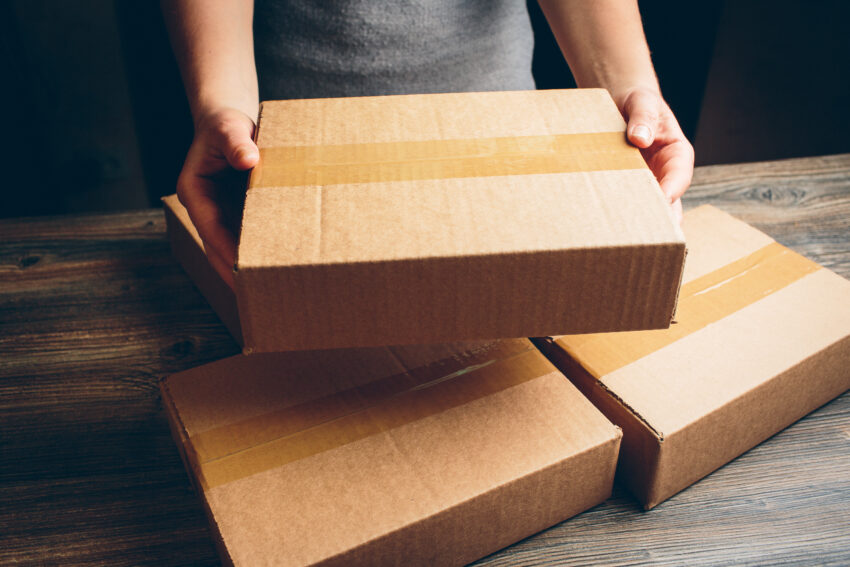Various courier, shipping, and package monitoring software have become an integral part of our daily life.
Anyone who has ever sent parcels or ordered stuff can be convinced of their convenience. But how does the information get into them? What processing stages do the transported goods go through? And what are the advantages for all participants in this system? You can find out all the details in this article.
Main Steps of Delivery Systems
For an average user, the whole process looks pretty straightforward. After transferring a package to a courier company, they receive a tracking number, monitor the parcel path through services such as the USA Post tracker, and receive it at the final destination. From the point of view of delivery firms, everything looks a little more complicated.
1. Placing a barcode
The primary processing of a product implies barcode binding. It serves as an individual identifier to distinguish one item from another. It usually contains the following information:
- Type of product;
- Date of production;
- Expiration date;
- Destination;
- Buyers’ contact details, etc.
The complete list of data depends on the specific manufacturer. After that, each barcode should be scanned and entered into the main database.
2. Transfer to a courier service
When a store transfers products to the courier service, each package is assigned a tracking number, by which the recipient and the sender can track the movement of items.
3. Sorting and planning routes
Having received a certain volume of parcels, the delivery service sorts and groups them depending on the directions. The most suitable route is determined based on the data about the sender, the recipient, and the cargo characteristics. Companies also take into account the following factors:
- Timing or deadlines. Almost any business nowadays aims to deliver goods as quickly as possible. That is why they choose not the most convenient or cheapest way, but the one that will be the fastest;
- The total volume of parcels. A vehicle is selected depending on this parameter;
- The longer the path, the more likely there will be intermediate stops and extra reprocessing of parcels.
4. Sending to the recipient
After determining the optimal route, the parcel is sent to the recipient. At each local and global checkpoint, the barcode is re-scanned. The information in the database is updated so that you can follow the movement of your shipments through websites or applications. You can see the day and time when the package arrived at a particular sorting point.
5. Delivery
When your box arrives at its final destination, it is processed again to update the information in the tracker. You can see different statuses in your account depending on the delivery company, but they all mean that you can pick up the package. You can do it in person, order delivery by a courier, or ask to leave the goods at the nearest pick-up point. Usually, the transmission of the package to the recipient is considered the end-stage. However, for some time after it, the client has the right to file a complaint with the service in case of any disputes.
Pros of Tracking Systems
Such systems are essential for businesses and their customers. Regardless of whether you use the services of a large or small company, you count on the fact that they will be able to arrange fast and efficient delivery of ordered products. In addition to trained employees and a sufficient number of vehicles, it also requires tracking systems. They allow the company to monitor and correct work processes and keep customers informed of the exact location of the purchased items.
Modern logistics services offer their customers comfortable solutions that expand the capabilities of conventional monitoring:
- Search for missing cargo;
- Informing about emergencies;
- Notifications by email, phone, or messenger about each stage on the route;
- Adjustment of delivery dates and times;
- Transfer of rights to receive a parcel to another person;
- Change of delivery address, and much more.
Moreover, the anonymous data collected during operation can be analyzed to improve many aspects of the business involved. Lots of work operations are automated, which significantly reduces the overall shipping cost and increases the speed of processing and delivering any package. Thanks to the implementation and continuous improvement of parcel tracking systems, companies remain in demand among customers and stay competitive.
More Opportunities Every Year
Although from the outside, the process of delivering and monitoring cargo may not seem so complex, it involves a large number of personnel, vehicles, and specialized software. With the help of tracking systems, both recipients and senders of parcels can track their movements in almost real-time. Moreover, it can be done anywhere from a computer or smartphone, around the clock, and no matter what continent you are on.


